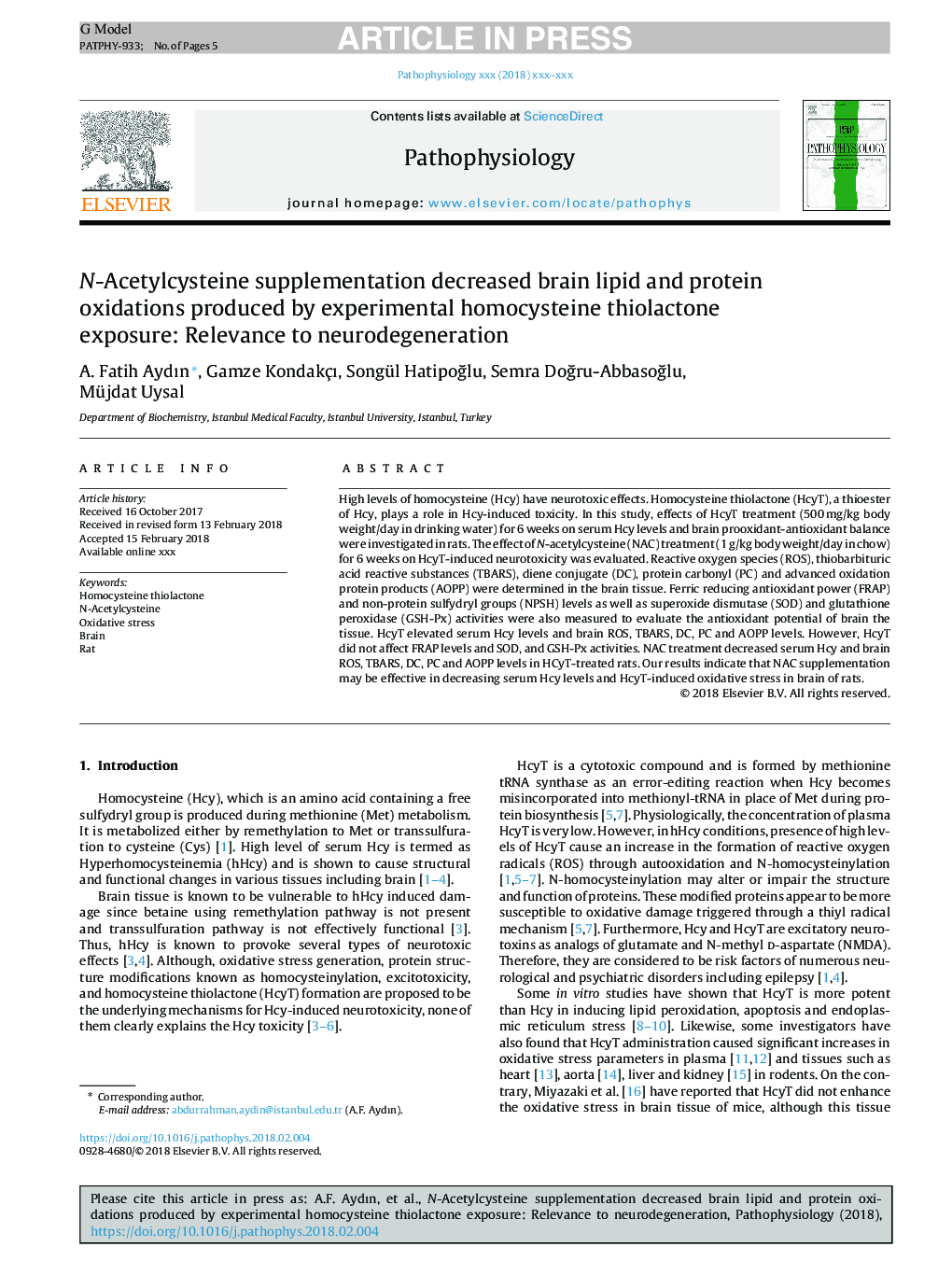| Article ID | Journal | Published Year | Pages | File Type |
|---|---|---|---|---|
| 8807929 | Pathophysiology | 2018 | 5 Pages |
Abstract
High levels of homocysteine (Hcy) have neurotoxic effects. Homocysteine thiolactone (HcyT), a thioester of Hcy, plays a role in Hcy-induced toxicity. In this study, effects of HcyT treatment (500â¯mg/kg body weight/day in drinking water) for 6 weeks on serum Hcy levels and brain prooxidant-antioxidant balance were investigated in rats. The effect of N-acetylcysteine (NAC) treatment (1â¯g/kg body weight/day in chow) for 6 weeks on HcyT-induced neurotoxicity was evaluated. Reactive oxygen species (ROS), thiobarbituric acid reactive substances (TBARS), diene conjugate (DC), protein carbonyl (PC) and advanced oxidation protein products (AOPP) were determined in the brain tissue. Ferric reducing antioxidant power (FRAP) and non-protein sulfydryl groups (NPSH) levels as well as superoxide dismutase (SOD) and glutathione peroxidase (GSH-Px) activities were also measured to evaluate the antioxidant potential of brain the tissue. HcyT elevated serum Hcy levels and brain ROS, TBARS, DC, PC and AOPP levels. However, HcyT did not affect FRAP levels and SOD, and GSH-Px activities. NAC treatment decreased serum Hcy and brain ROS, TBARS, DC, PC and AOPP levels in HCyT-treated rats. Our results indicate that NAC supplementation may be effective in decreasing serum Hcy levels and HcyT-induced oxidative stress in brain of rats.
Related Topics
Health Sciences
Medicine and Dentistry
Pathology and Medical Technology
Authors
A. Fatih Aydın, Gamze Kondakçı, Songül HatipoÄlu, Semra DoÄru-AbbasoÄlu, Müjdat Uysal,
